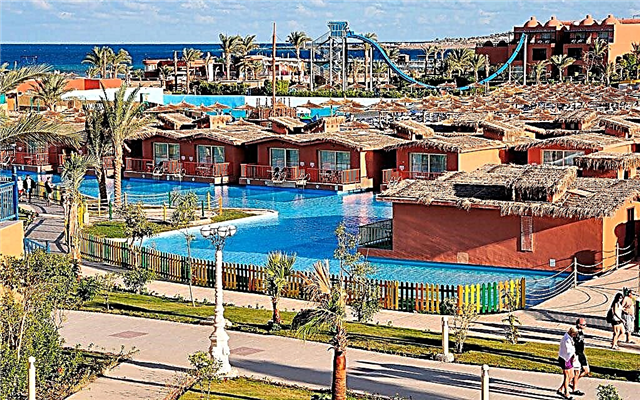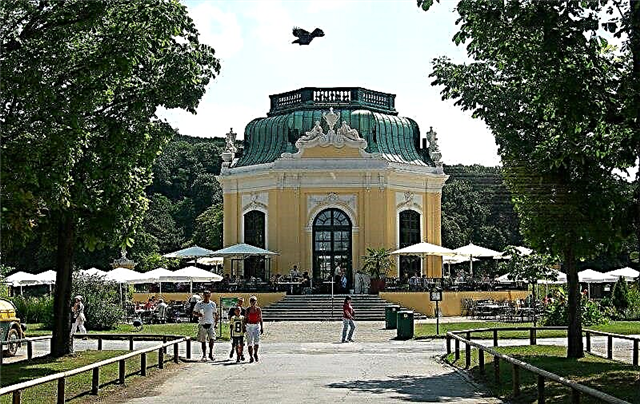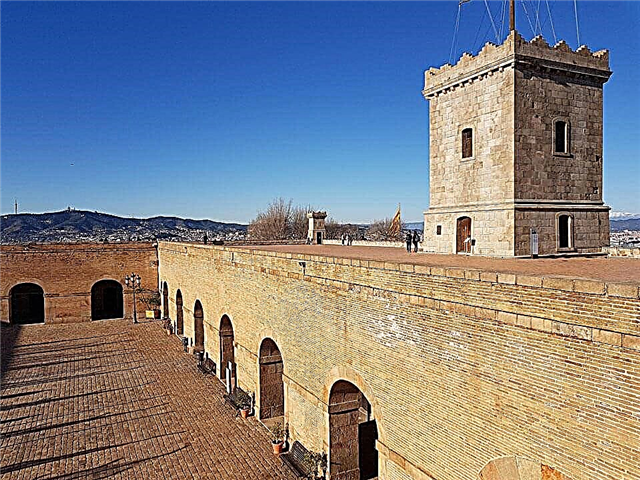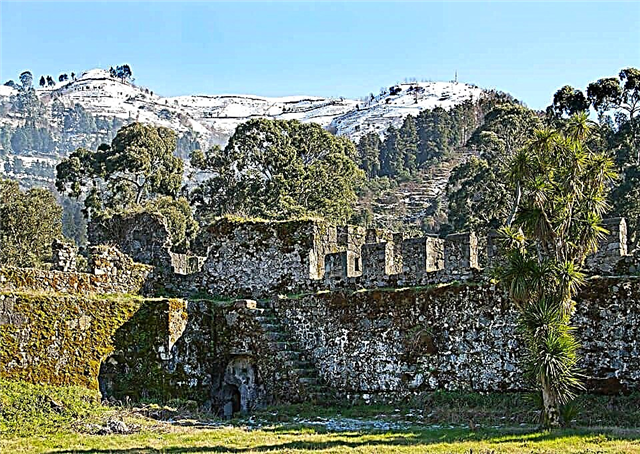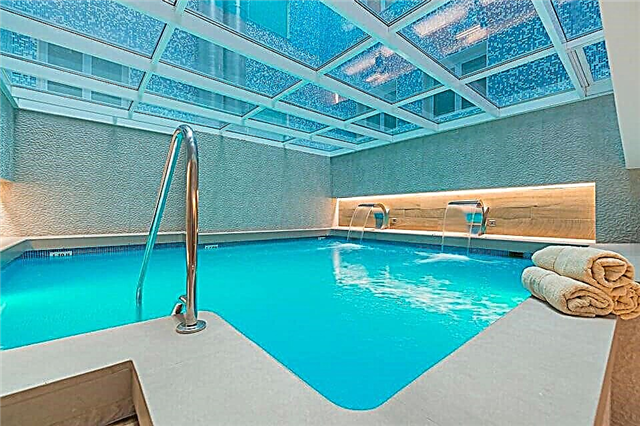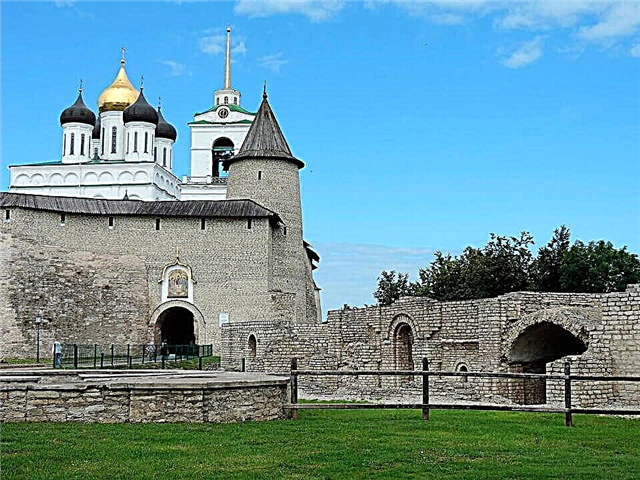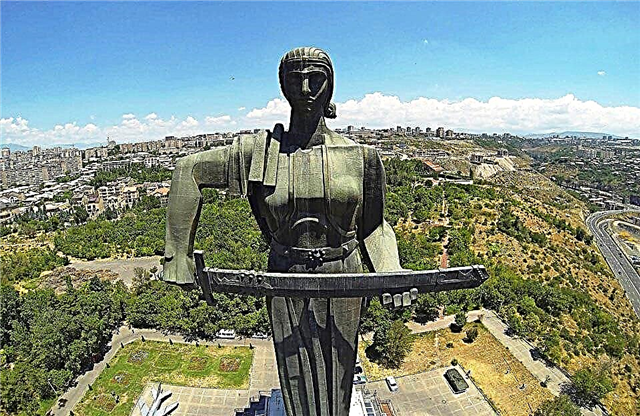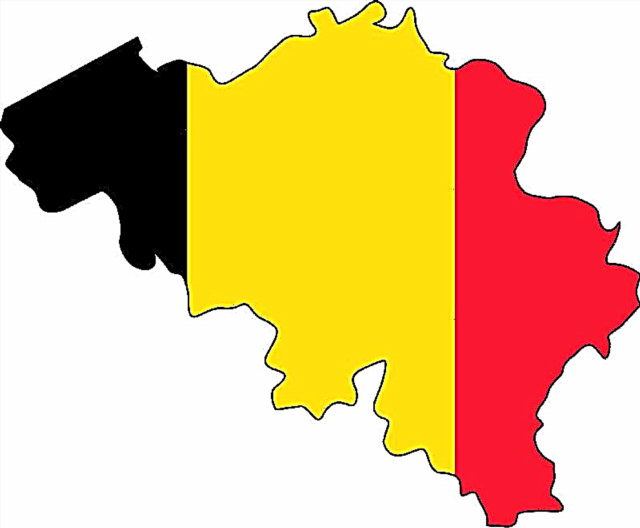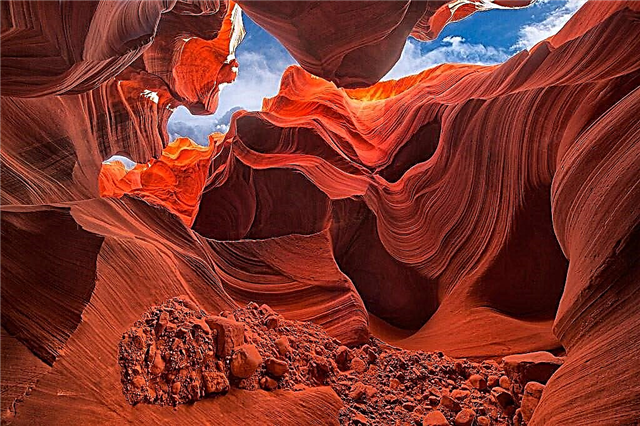Real travelers, whose desire to know the world extends beyond the bounds of well-known guidebooks, guides, no doubt should be interested in a trip to an extraordinary place with an unusual name - Antelope Canyon. Locals (Navajo Indians) call it "Spiral Arches of the Rock". This breathtaking gorge is inexplicably not included in the list of national reserves in the United States, but it also has its advantages: there is no such crowd here as, for example, in the Grand Canyon in Colorado or Bryce Canyon. At the same time, Antelope Canyon is a tribal park of the Navajo Indians, which they named this place in 1997.
Read how to apply for a visa to the United States yourself in our article.

Antelope Canyon: Upper and Lower
Antelope Canyon is located in northern Arizona (near the Utah border) near the city of Paid and 150 km from the world's favorite Grand Canyon. If the excursion to the Great Canyon is planned for more than one day, but several, you just need to look into Antelope Canyon.
Antelope Canyon (although it is more correct to speak of two at once - upper and lower) is located on land belonging to the Navajo Indians. The upper canyon is more accessible: the ascent is smooth, the surface is sandy - so the journey is not a problem even for people with disabilities who are forced to move on crutches or wheelchairs (the entire length of the gorge is at ground level).

The second canyon is located right across the road, and, if you wish, you can visit it too, if only in order to compare both and understand for yourself which one is better. However, the journey along the Lower Canyon is much more difficult: earlier travelers even had to use rope ladders.
Now there are normal lifts here, but the walking route is longer and not very convenient: in some places it is very narrow, in others the rocks hang very low - so that it is impossible to stand at full height. It is also worth remembering that the staircases with which the canyon is equipped still require special attention. The canyon stretches for about 100 meters.

Interesting articles:
- Canyonlands National Park, USA
- Grand Canyon, USA
- 7 most beautiful canyons in the world
Antelope Canyon is the best place for a photo shoot
According to the accepted classification, Antelope Canyon is the so-called crevice formation. Such gorges, as a rule, are filled with water, in this regard, Antelope canyon is a pleasant exception for travelers: tourists follow corridors and "halls" that resemble Catholic cathedrals or monks' cells, made by streams of water. It is recognized as the most beautiful of all such natural formations.

For many centuries, the water has irrigated the sandy soil, and the wind worked over the rocks, creating a unique relief. The uniqueness of the area was facilitated by floods: for a long time the water made its way, smoothing the rocky ledges and giving them smooth lines. As a result, a place of unique beauty was formed, fascinating everyone who happened to be there: where else can you see how the sun is crying.

This effect is obtained when the rays penetrate through the rocks: it seems that sun drops are falling from above. At the same time, the caves are painted in a variety of colors - from red to purple, from blue to purple. This spectacle is especially impressive in the period from March 15 to October 7, when the sun rises above the horizon at its highest. At this time, the rays reach the very bottom of the canyon.
Antelope Canyon is a favorite among photographers. By the way, the gorge looks much more impressive in photographs than in reality, since some colors and tones appear only on film. Note for amateur photographers: Photos are especially beautiful when shot in the middle of the day.
At this moment, you begin to understand why the canyon received such a name - Antelopes: the rocks acquire a reddish-red hue, reminiscent of the skin of this animal. The most spectacular is the Lower Canyon. The best shots come in the morning (the sooner the better) or at the end of the day.
The canyon became deeper after the storm of the elements in 2002. Then a mudflow descended on this place, deepening the gorge by about 2 meters.

Every year it is gradually covered with sand brought by sandstorms, but carried away by torrential rains.
How to get to Antelope Canyon
Antelope Canyon is four miles from Paige. The main landmark is a coal power plant (according to travelers who have visited the canyon, it is impossible to miss it). After it, signs appear - and not standard ones set by road services, but handwritten.
Not far from the destination, there are native locals on duty (those same Navajo Indians) who, for a small fee, are ready to either conduct an excursion or deliver tourists to their destination. This moment is one of the most important during the trip: the territory is legally secured by the American authorities as an Indian reservation zone. It is possible to penetrate it only with the permission of the tribal leadership.

It should also be remembered that there is a $ 3 fee per adult for the canyon tour.
This method is suitable for those who like to travel on their own. Everyone else can use the services of travel agencies - there are plenty of them in Page. You can agree on a trip in advance by leaving a request on the website of travel companies or by calling. As a rule, 3 flights are organized during the day - at 10.00, 12.00 and 14.00.
The excursion takes an hour and a half: it takes half an hour to reach the destination, an hour is given to stay in the canyon itself. The cost is about $ 30. There are also specialized tours for those who are going to take photos. They last 3 hours - so that there is additional time for choosing the most successful location, preparing the equipment and the shooting itself. You will have to pay $ 45 for such a trip.

In both the first and second cases, the price includes all federal deductions (fees and taxes), as well as duties. The guides are quite professional and can tell you about everything that preceded the formation of the canyon, about the events associated with it, as well as about local attractions and how the Indians live now. They can talk for hours - clients are heard. Sometimes they even have to be stopped - so that nothing interferes with admiring nature.

What to take with you
If you want to take good pictures while visiting Antelope Canyon, you should take professional equipment (it will be provided by local travel companies). Photo amateurs, of course, somewhat interfere with the main tourists, but people are sympathetic to what is happening: after all, everyone is with cameras and with a desire to capture beauty, but not everyone has the capabilities of professionals. And on them - with an deployed tripod, blocking the already narrow passage - you can bump into literally around every corner.

At the same time, professional photographers warn that you need to try very hard to get high-quality pictures: it will take a lot of time to install and configure the equipment and wait for the most advantageous moment. Moreover, additional lighting may be required - the built-in autofocus illumination may not be enough. In any case, a lantern prudently taken with you will definitely not hurt.

Professional Tips:
- be sure to grab a tripod
- stock up on a lot of film
- grab a powerful lantern
Rules of stay
As already mentioned, Antelope Canyon is the territory of the Navajo Indians.You can visit this place only by agreement with representatives of this ethnic group and with their participation.

The nearest settlement is the town of Page with a population of about 7 thousand inhabitants, which is replete with church churches - there are 12 of them in the town. It is not necessary to book a visit time: there is a "live queue". Bonus: Indians-guides meet and escort each group of tourists with national music: they play many instruments (even the flute!) and sing songs in their own language. The journey from Vegas to Antelope Canyon takes approximately 5.5 hours.
The territory occupied by the Navajo Indians is approximately 67 thousand square kilometers, and includes the states of Arizona, Utah and New Mexico. In the United States, this is the largest Indian reservation, which received its special status with the permission of local authorities. Previously, this area was called the "Navajo Indian Reservation", since April 5, 1969 it is called the "Navajo Nation".

